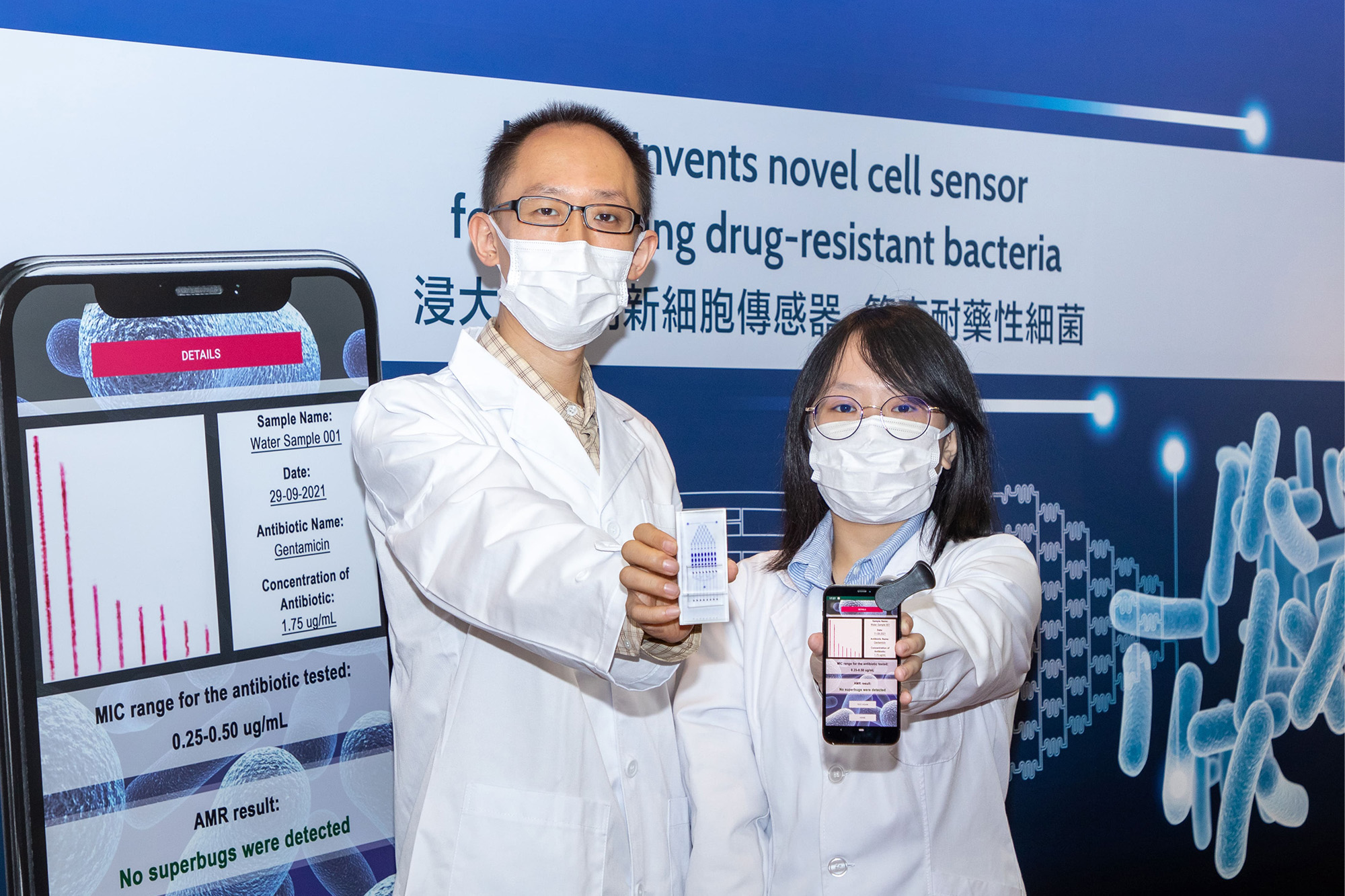Rapid and Cost-Efficient Antimicrobial Susceptibility Testing Using Barcode Cell Sensor


Overview
The emergence of antimicrobial resistance (AMR) poses a significant challenge to global health, necessitating the development of rapid and cost-effective antimicrobial susceptibility testing (AST) methods. While several AST techniques have been proposed, there is a scarcity of methods suitable for resource-limited conditions, such as water/food/public facility safety screenings or AMR tests in low-income countries. This is a novel "barcode" cell sensor that addresses the limitations of existing methods and offers a promising solution for onsite testing and subsequent advanced analysis.
The "barcode" cell sensor is based on an adaptive linear filter array, capable of automatically and accurately counting small volumes of cells (~1.00 × 10^4 cells) without pre-incubation. Suspended cells aggregate into microbars of varying lengths, directly proportional to the cell count. This sensor is combined with an on-chip culture approach, enabling rapid and automated drug exposure. The entire AST process is microscope-free, cost-efficient, and resource-independent, with results conveniently accessible through a cell phone.
Project-in-charge
Dr Kangning Ren
Associate Professor and Programme Director, Department of Chemistry
Key Features
- Fully automatic and microscope-free method for counting small volumes of cells
- Low-cost and resource-independent platform for portable AST
- Short turnaround time of 2-3 hours compared to standard methods (16-24 hours)
- High throughput capability for processing a large number of samples
- User-friendly operation and accessibility of results via a cell phone


Technology Readiness Level


Potential Applications
- Frequent safety screenings of water, food, and public facilities
- Urgent surveys of massive samples during pandemics or infectious disease outbreaks
- AMR tests in low-income countries or resource-limited settings
- Screening for drug-resistant bacteria in various environments
Market Outlook & Unique Value Proposition
According to the marketing report from Allied Market Research, the global antimicrobial susceptibility testing market was valued at $3,040.00 million in 2020 and is projected to reach $4,736.03 million by 2030, registering a CAGR of 5.8% from 2021 to 2030.
The United States has been building a solid foundation for public health preparedness to address antimicrobial resistance. Since 2016, CDC has funded more than $160 million in 300 projects and collaborated with more than 100 public and private institutions to address knowledge gaps with scalable, innovative solutions.
The "barcode" AST system represents a breakthrough in the field of AST, enabling rapid and cost-efficient screening of drug-resistant bacteria. By employing a microscope-free analysis, it eliminates the need for expensive equipment while providing reliable results consistent with conventional AST techniques. The system's short turnaround time, affordability, portability, high throughput, and user-friendliness make it an invaluable asset in addressing the demands of AST in resource-limited conditions.
Representative Publications
Chan, C-W., Sun, H., Wang, Y., Zhao, Z., O'Neill, R., Siu, S-Y., Chu, X., Banaei, N., & Ren, K. (2021). “Barcode” cell sensor microfluidic system: Rapid and sample-to-answer antimicrobial susceptibility testing applicable in resource-limited conditions. Biosensors and Bioelectronics, 192, [113516]. https://doi.org/10.1016/j.bios.2021.113516
Patents
- PCT application no. PCT/CN2022/094665